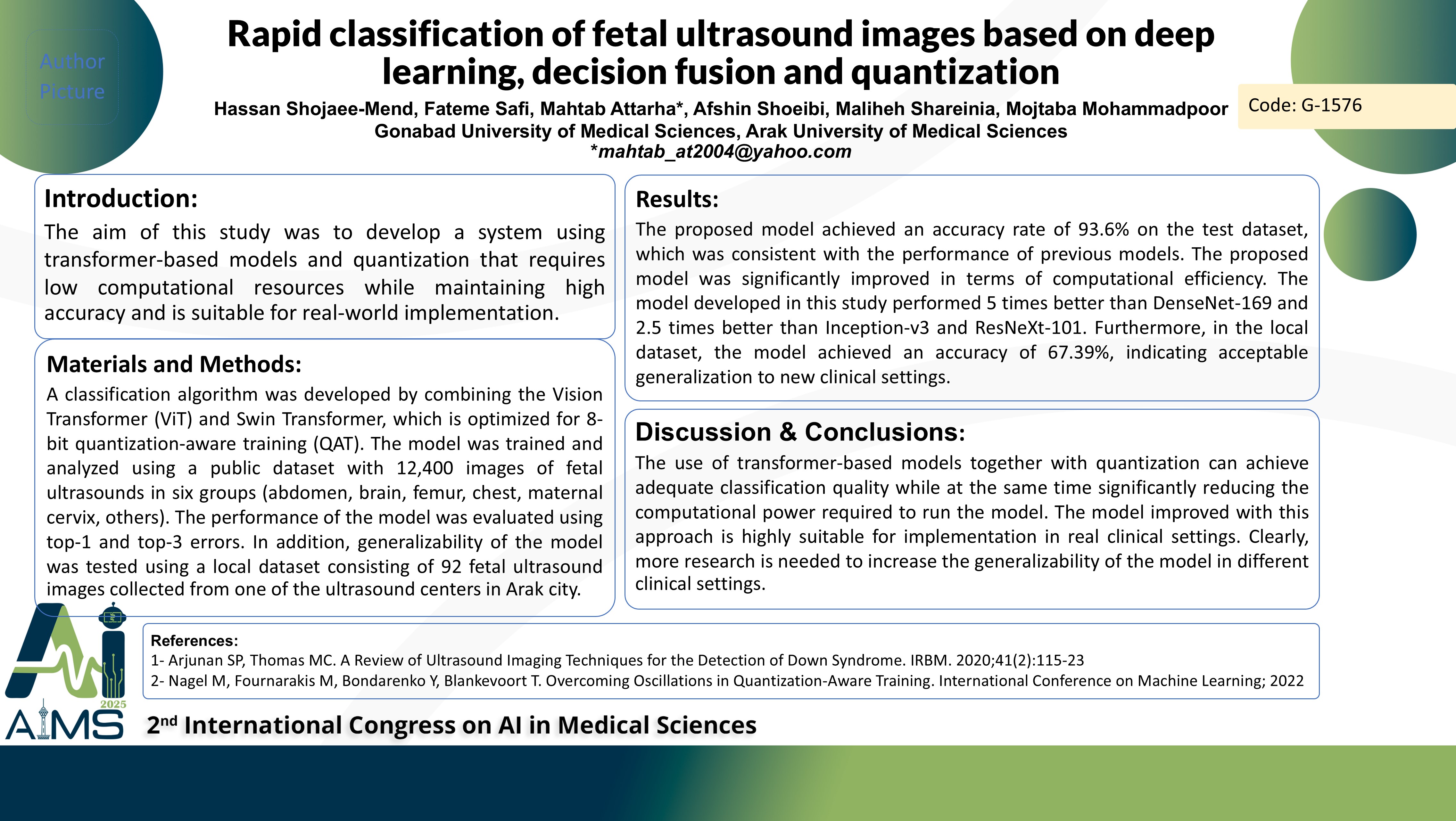طبقه بندی سریع تصاویر سونوگرافی جنین مبتنی بر یادگیری عمیق، ادغام تصمیمگیری و کوانتیزاسیون
کد: G-1576
نویسندگان: Hassan Shojaee-Mend ℗, Fateme Safi, Mahtab Attarha *, Afshin Shoeibi, Maliheh Shareinia, Mojtaba Mohammadpoor
زمان بندی: زمان بندی نشده!
برچسب: پردازش سیگنال های پزشکی
دانلود: دانلود پوستر
خلاصه مقاله:
خلاصه مقاله
Background and aims: Classification of fetal ultrasound images is important for prenatal care and diagnosis, but manual classification is time-consuming and depends on operator experience. While previous studies have shown good results using deep learning algorithms, existing models often require large computational resources, which limits their implementation in clinical settings. The aim of this study was to develop and evaluate an automated fetal ultrasound image classification system using transformer-based models and quantization that requires low computational resources while maintaining high accuracy and is suitable for real-world implementation. Method: In this study, a classification algorithm was developed by combining the Vision Transformer (ViT) and Swin Transformer models, which is optimized for 8-bit quantization-aware training (QAT). The model was trained and analyzed using a public dataset with 12,400 images of fetal ultrasounds in six groups (abdomen, brain, femur, chest, maternal cervix, others). The performance of the model was evaluated using top-1 and top-3 errors. In addition, generalizability of the model was tested using a local dataset consisting of 92 fetal ultrasound images collected from one of the ultrasound centers in Arak city. Results: The proposed model achieved an accuracy rate of 93.6% on the test dataset, which was consistent with the performance of previous models. The proposed model was significantly improved in terms of computational efficiency. The model developed in this study performed 5 times better than DenseNet-169 and 2.5 times better than Inception-v3 and ResNeXt-101. Furthermore, in the local dataset, the model achieved an accuracy of 67.39%, indicating acceptable generalization to new clinical settings. Conclusion: The use of transformer-based models together with quantization can achieve adequate classification quality while at the same time significantly reducing the computational power required to run the model. The model improved with this approach is highly suitable for implementation in real clinical settings. Clearly, more research is needed to increase the generalizability of the model in different clinical settings.
کلمات کلیدی
Fetal Ultrasound, Deep Learning, Quantization
